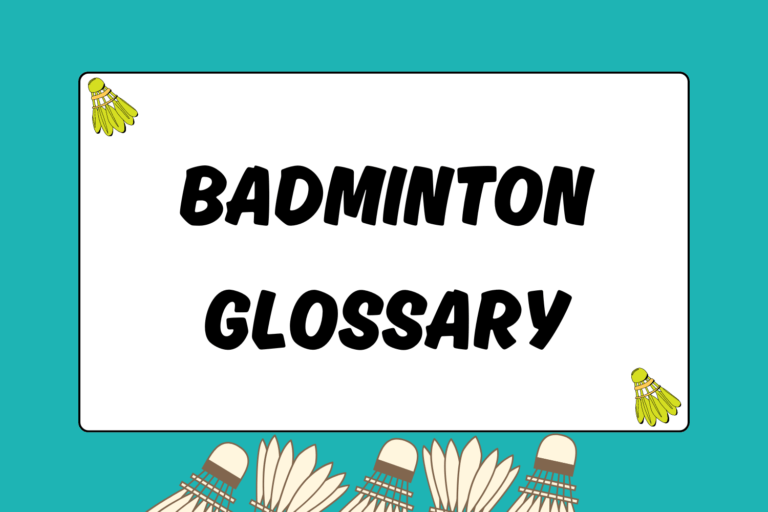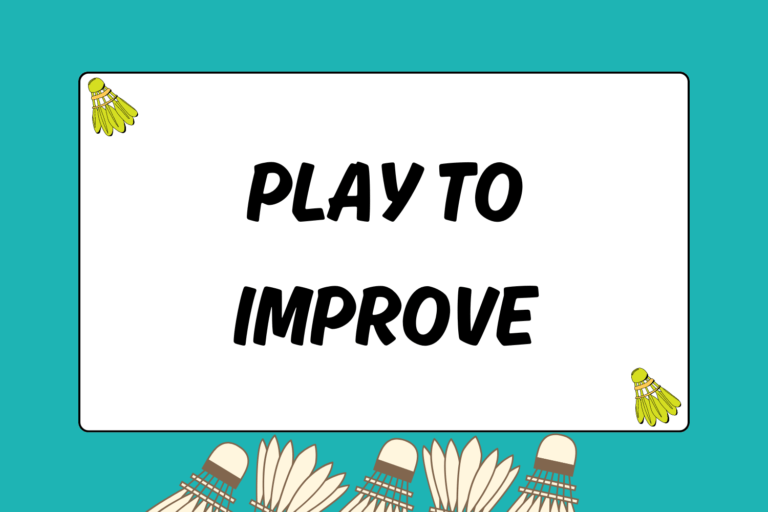Transitioning from casual badminton to competitive badminton can seem daunting. However, the world of competitive badminton is actually fairly mellow and offers a great way to meet other players.
You may be wondering, “How do I register? How long will it take? How good are the other players?” This guide will cover all of these valid questions and more to ease your anxiety about your first tournament.
Finding a Badminton Tournament
This can be difficult because there isn’t a convenient way for first-timers to find local competitions. Although information about local badminton tournaments might be limited on the Internet, it should still be the first place to look.
Typically, badminton-dedicated gyms will host tournaments a few times a year, so checking a gym’s website is a good bet. Even if you come up empty, you can always contact the gym via email or phone.
Beyond that, you should consider heading to local gyms and simply asking around. Employees at recreation centers might not have any quality information. They could, however, find other gyms that you can contact.
Badminton Events
Once you find a tournament, decide what event you want to play. The events are:
- Men’s singles: Each team is comprised of a single male
- Women’s singles: Each team is comprised of a single female
- Men’s doubles: Each team is comprised of two males
- Women’s doubles: Each team is comprised of two females
- Mixed doubles: Each team is comprised of one male and one female
If you wish to play in a doubles event but are without a partner, you may still be able to. Most tournaments add or drop players on the day of the event, so a few people will be stranded without a teammate.
You shouldn’t rely on finding a partner at the tournament, but it’s always a last-minute option. Aside from each event, there are four flights of difficulty in which you can compete. The flights are:
- A Flight: The highest level of play with skill levels ranging from highly competitive players to professional players. There is typically a cash prize for all events in this flight.
- B Flight: This is just a step below A Flight because it features semi-professional and highly experienced players.
- C Flight: This flight features younger players who have been training hard and more experienced players who play competitively only sparingly. Normally, C players will have one to two years of competitive experience.
- D Flight: Here, you’ll find an even greater range of players, from beginners to semi-retired. Although it’s the largest of the flights, you should start here for your first tournament.
In most tournaments, you’ll be able to sign up for two flights, but they’ll have to be neighboring flights. Additionally, you cannot play different flights for each event if you’re playing more than one event.
For example, if you’re playing C and D men’s singles, you cannot play B and C men’s doubles. The trouble here is playing a B flight in one event and skipping a flight to play D in another event. This helps prevent players from competing in flights lower than their skill level, which is otherwise known as “sandbagging.”
Badminton Tournament Formats
There are three distinct styles of tournament formats for badminton. The style is solely up to the tournament director but will not be changed when the tournament is in progress. The three styles are:
Consolation:
The most popular of the three, the consolation style guarantees players at least two games before being eliminated. There will be a main bracket and a consolation bracket.
Initially, all players or teams will start in the main bracket, with the consolation bracket being completely empty. After the first round of matches, any team that loses will immediately enter the consolation bracket. A loss in the second round of the main bracket or the first round of the consolation bracket will eliminate a team from the tournament.
As such, a team is guaranteed at least two matches, regardless of record.
Single-elimination:
Some tournaments will adopt this style when faced with time or court-space constraints. Single-elimination tournaments have almost half the number of matches as consolation tournaments, so they are ideal for smaller gyms. Single elimination is straightforward in that a team will continue to play until it loses.
Round-robin:
A tournament will very rarely use this format because it’s so time-consuming. Round-robin has each team play every other team in the same flight and event.
For example, if there are five women’s singles teams, each team will play four times, once against each of the other teams. Tournaments will adopt this format only if a certain flight in an event has five teams or less.
Checklist for a Badminton Tournament
The night before a tournament can make any player a bit anxious, so knowing that you have everything you’ll need should ease your nerves a bit. The things provided to you by a tournament will vary, so it’s safest to just assume that nothing will be provided. This means you should have the following items:
- Rackets: If you have the money, it’s smart to bring an extra racket or two in case your favorite racket or its strings break.
- Shuttlecocks: Tournaments will always require feather shuttlecocks for matches, so you should definitely get your own. One tube of a dozen feather shuttlecocks should be sufficient since your opponents and your partner should also offer up their shuttlecocks for use.
- Shoes: Having a pair of badminton shoes will help you move around the court a bit easier, but it’s not an absolute must.
- Racket Grip: This is only necessary if you feel like your racket grip is wearing thin.
- Money: Make sure to bring cash with you to pay for your tournament fees. Oftentimes, a vendor will be present at the tournament, and you can purchase any badminton equipment you need.
- Food and drinks: Playing in a tournament can be an exhausting affair. Bring lots of drinks for hydration and light snacks to replenish your energy.
- Clothing and accessories: The lack of circulation for indoor sports can make players sweat excessively. Bring extra clothes and a towel to stave off the slickness. Also, don’t forget to bring any braces or hair ties that you may need.
Match Schedule & Format
Tournaments typically start in the morning and last all day. Specific times should be listed on the tournament website or relayed to you via email.
When you arrive at the tournament, there will be a sign-in desk where you pay your entry fee and sign a waiver form. The brackets and a schedule for approximate match times should be set up along a wall.
If you’d like to warm up before the tournament, the hour before it starts is usually reserved for that purpose. Also, it’s typical to see long delays between your matches. Stay warm and game-ready by hitting around on an open court.
The standard structure of matches is 21-point games in a best-of-three format. The only exception occurs when matches are played in the consolation bracket. Normally, a consolation match consists of only one game to 21 points. However, this can vary among tournaments, so it’s best to check with the tournament staff.
It’s Still Badminton
Playing in tournaments and maintaining your energy throughout a long day can be stressful, but always remind yourself that you’re still playing badminton. The sooner you become comfortable playing the matches, the easier the games will become.
Competition will be more intense than the usual pick-up games, but it’s still important to enjoy yourself. Having a good first experience will drive you to become an even better player and hopefully reinforce your love of the game.





